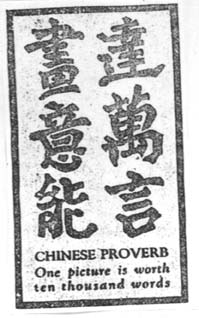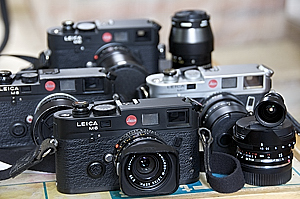While much dwells on results, I also think what matters is the process. Which intrinsically means spending time in a dynamic way for achieving a static result. As an aside, the result itself can provide for another process; however, it can surely be said that one is handicapped from the get-go if the process is faulty. In the arts, I believe that if the process in creating or performing art is enjoyable, so will its reception. I find this saying particularly app: To travel well is more important than to arrive [1].
 One short take, for which I’ve been spending a good time on, is photography. I work on honing my skills as I feel it’s important to be able express oneself effectively in this art. As the Chinese indicate “A picture is worth ten thousand words” (Chinese culture considers 10,000 as a mind-boggling number), perhaps it’ll save a lot of time explaining oneself, but perhaps more importantly it provides for delivering a compelling message.
One short take, for which I’ve been spending a good time on, is photography. I work on honing my skills as I feel it’s important to be able express oneself effectively in this art. As the Chinese indicate “A picture is worth ten thousand words” (Chinese culture considers 10,000 as a mind-boggling number), perhaps it’ll save a lot of time explaining oneself, but perhaps more importantly it provides for delivering a compelling message.
What’s involved in this photographic process is, of course, the camera. I believe the type of camera matters. If you don’t enjoy your camera, you’re likely to take lousy pictures and waste a lot people’s time and likely run them worse for the experience. It is difficult to overcome a resultant bias. Students may be forgiven, but if you don’t work on improving, you will get nowhere or will hit a glass ceiling. For me, the photographic process involves removing the non-essentials, the distractions and anything that gets in the way until one can truly focus on the task at hand to capture the moment. Upon its fleeting appearance, and as fast as one’s nervous-mechanical systems allow, one must pull the trigger instantly upon the arrival of the moment. This is a very intentional process, there’s little to no room for hiccups and there can be no hesitation. This can be relative, of course, as some subjects or lighting have longer time constants, however, you’ll know when you have your process down pat when find that the hunt is just as much fun as the trophy. Even more so when the stakes are higher.
I’ve found portability, free from care of the last charge, say relative independence from a battery or power source – a time period say of several months – high quality lenses, a solid, ergonomic camera that isn’t distracting, and an agreeable workflow to be conducive to producing pleasing artwork. My favorite is the mechanical Leica M film cameras. They are built like guns – simple, to the point and all business. In the heat of the moment, the Leica stays out of the way and does your bidding, instantly. To work with this legendary brand, the founder of 35mm photography, is a much enjoyable process. These Leicas don’t excuse themselves for a dead battery, have minimal shutter-lag, provide no opportunity for the nasty, time wasting habit of chimping over the back of the camera monitor and, of course, their film image quality is second to none[2].
 But a Leica may not suit everybody. I believe that although that the aforementioned points do matter, it is to what extent you can find a camera and workflow process that works for you and is enjoyable. And, if you really want to improve yourself, examine what’s getting in the way of you taking good pictures, and do something about it. Perhaps it may not be Leica and the film process but also ever being on the look out for trying new steps in the process to deliver effective photos. Are you giving thought about whether the process is working for you; moreover, is it enjoyable? Are the results compelling? A picture is worth 10,000 words, but it does take effort to see that your 10,000 words make sense and that it does happen.
But a Leica may not suit everybody. I believe that although that the aforementioned points do matter, it is to what extent you can find a camera and workflow process that works for you and is enjoyable. And, if you really want to improve yourself, examine what’s getting in the way of you taking good pictures, and do something about it. Perhaps it may not be Leica and the film process but also ever being on the look out for trying new steps in the process to deliver effective photos. Are you giving thought about whether the process is working for you; moreover, is it enjoyable? Are the results compelling? A picture is worth 10,000 words, but it does take effort to see that your 10,000 words make sense and that it does happen.
Notes:
- Attributed to Buddha.
- Shutter lag for a mechanical M is about 16ms. Its digital M9 counterpart is 80ms. Other digital cameras are likewise significantly slower. Source: Wikipedia.
